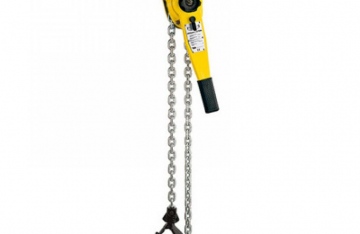There are 3 basic types of air valves commonly used in slurry control.
- Air Release Valves
- Air Vacuum Valves
- Combination Air Valves
The effect of trapped air in a pipeline can have serious effects on system operation and efficiency. As air pockets collect at high points, a restriction of the flow occurs that produces unnecessary head-loss. A pipeline with many air pockets can impose enough restriction to stop all the flow, and the other problem associated with air pockets is sudden changes in velocity, which occurs when these move or burst, so there could be no flow or a sudden surge of water which can cause damage.
Air Release Valves
A heavy duty slurry air release valve will automatically exhaust large volumes of air from the system when it is being filled and allows air to re-enter the pipeline when being emptied. These are specifically designed not to leak or block and they have a self-cleaning ball action alongside a positive seal to stop any possible leak.
Slurry air release valves are designed for:
- Slurry Pipe Lines
- Tailings Lines
- Deep Well Pumping
- Rainwater/Return Water Pipe Lines
- Sewage Lines
- High-Pressure Pipe Lines
- Pipeline with scale
- Iron Ore Pipelines.
Click here to find out more about slurry air release valves.
Air Vacuum Valves
Air Vacuum Valves are float operated and have a large discharge orifice equal in size to the valve’s inlet. These valves allow large volumes of air to be exhausted from or admitted into a pipeline as it is being filled or drained. As the pipeline fills the fluid enters the valve, raises the float and shuts-off. When draining the pipeline, the float drops and allows air to enter, preventing a vacuum and possible pipeline collapse or damaging water column separation
Combination Air Valves
Combination Air Valves can be used for clean or dirty services. The unique venting design provides varied and predictable airflow over a wide range of air release and air vacuum conditions. They provide a large diameter air vacuum disk which provides high volume air flow for rapid venting during pipeline filling, and allows for high volumes of air to enter the pipeline during draining. When there is just ordinary pipeline flow the dual-range air release design prevents air build-up and flow restrictions which may have occurred naturally due to changing conditions which can affect the full flow range.
The Importance of Air Valves
When water or slurry passes through a restriction in the in the line such as a control valve, a dislodged pocket of air can cause surges or water hammer. Water hammer can damage equipment or loosen fittings and cause a leak. The other issue is corrosion in the pipe material which is accelerated when exposed to the air pockets, which can result in premature failure of the pipeline and expensive repair or replacement bills. An air valve is very important as they significantly reduce the risk of problems associated with things like sudden water surges when an air bubble bursts inside the pipe or completely stops the flow or significantly reduces the flow inside the pipes.
If you haven’t already done so, you should invest in regular inspections and maintenance of valves used in your equipment. This will save you money in the long term.




